- Home
- Prelims
- Mains
- Current Affairs
- Study Materials
- Test Series
 EDITORIALS & ARTICLES
EDITORIALS & ARTICLES
Feb 05, 2022
WHAT ARE LOW-CARBON EMITTING TECHNOLOGIES?
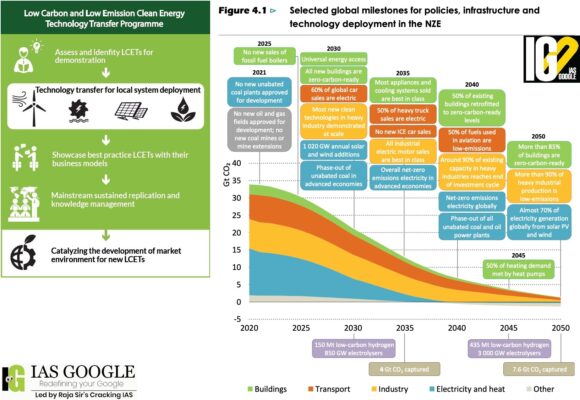 Low Carbon-Emitting Technologies:
Low Carbon-Emitting Technologies:
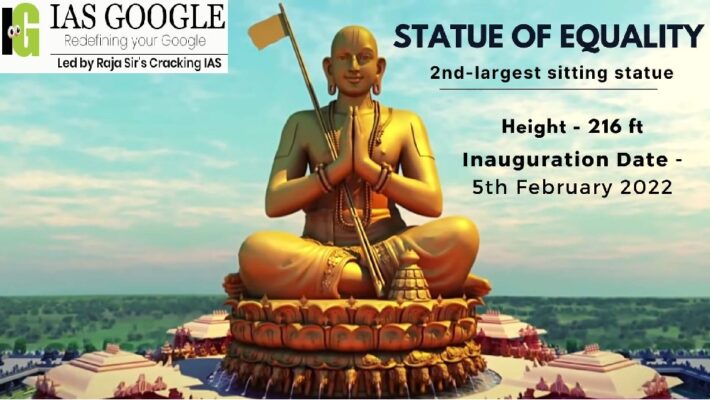 Prime Minister will inaugurate the Statue of Equality, a gigantic statue of Ramanujacharya of 216 ft, on February 5 on the outskirts of Hyderabad.
Prime Minister will inaugurate the Statue of Equality, a gigantic statue of Ramanujacharya of 216 ft, on February 5 on the outskirts of Hyderabad.
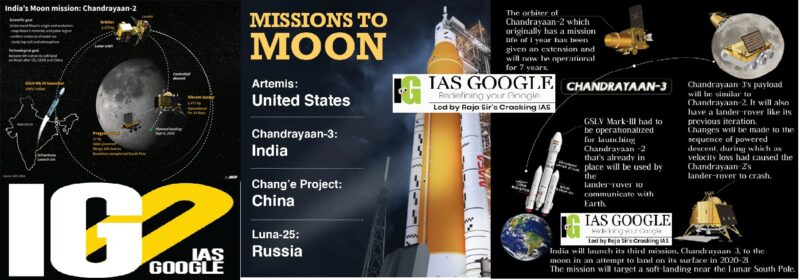 Chandrayaan-3 mission?
Chandrayaan-3 mission?


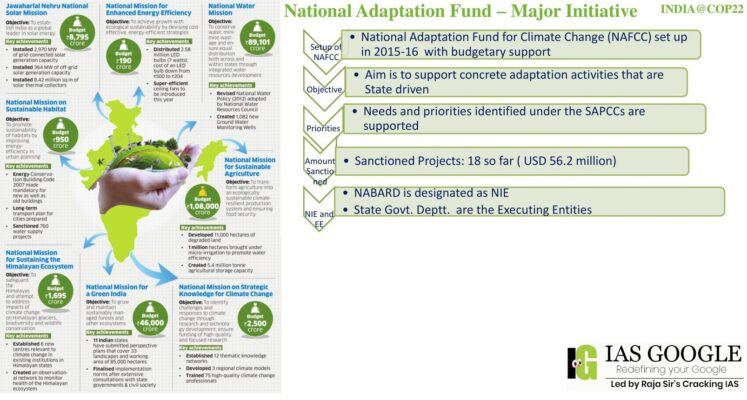

 What is AMR?
What is AMR?
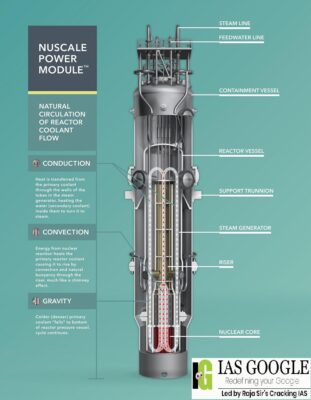 Status of Nuclear Energy in India:
Status of Nuclear Energy in India:
 Moon Evolve:
Moon Evolve:
- In the Net Zero Emissions by 2050 Scenario, industry emissions fall 2.3% annually to 6.9 Gt CO2 by 2030 – despite expected industrial production growth. Industrial energy consumption has risen considerably in the past two decades - increasing an average 1% per year between 2010 and 2019, along with demand for industrial products and CO2 emissions.
- According to the International Energy Agency's Industry Tracking Report 2021, in the Net Zero Emissions Scenario, growth in energy use needs to be limited to about 0.9% per year to 2030, despite expected expansion in industrial production.
 Low Carbon-Emitting Technologies:
Low Carbon-Emitting Technologies:
- Low-carbon emitting technologies (LCET) are referred to as innovative technical solutions that are characterized by a low emission intensity, compared to state-of-the-art alternatives. In a way, they can be seen as best-in-class technologies with a focus on environmental impact.
- Low carbon low emission clean energy technologies can help significantly reduce greenhouse gas emissions, promote access to energy and enhance productive energy use.
- This would require the recognition of all emission reduction potential initiatives in the form of programs and public funding support for the development and deployment of low-carbon emitting technologies (LCET).
- Access to affordable renewable energy and their deployment are key enablers for decarbonization of heavy industries.
- Technologies require cleaning up the most polluting sectors – such as hydrogen to reduce iron ore, green ammonia to fuel ships, or carbon capture and storage etc.
- There is a need to foster a market environment that rewards the supply of low-carbon emitting technologies and circular products and promotes bio-based technologies.
- Although both industry and governmental regulations increasingly support the expansion of renewables and related infrastructure, policy instruments that encourage their economically viable use would foster a more rapid deployment.
- Energy efficiency brings a variety of benefits: reducing greenhouse gas emissions, reducing demand for energy imports, and lowering our costs on a household and economy-wide level.
- Identification of land with Renewable Energy potential and the time-consuming procedures of land clearance.
- The low-carbon transition challenge is bigger for companies that are largely coal-powered and contribute more than half of our country’s emissions.
- Technological deficiency in the production of electronics that form the backbone of the EV industry, such as batteries, semiconductors, controllers, etc.
- EVs have higher servicing costs which require higher levels of skills.
- Emerging economies have a stability incentive to create resilience in their energy systems. Being efficient pays off in many ways and the regulations and legislative measures needed in those countries are measures to support growth and stability of energy supply and transmission systems as well as their flexibility.
- There will, however, also be a market driven environment, where companies are pressured to adhere to global decarbonization standards (supply-chain requirements), otherwise they will not be able to sell products on international markets anymore.
 Prime Minister will inaugurate the Statue of Equality, a gigantic statue of Ramanujacharya of 216 ft, on February 5 on the outskirts of Hyderabad.
Prime Minister will inaugurate the Statue of Equality, a gigantic statue of Ramanujacharya of 216 ft, on February 5 on the outskirts of Hyderabad.
- Government is celebrating his 1,000th birth anniversary as the ‘Festival of Equality’, upholding the view that the world is one family, ‘vasudhaiva kutumbakam’.
- Born in 1017 in Sriperumbudur in Tamil Nadu, Ramanujacharya is revered as a Vedic philosopher and social reformer.
- He travelled across India, advocating equality and social justice.
- Ramanuja revived the Bhakti movement, and his preaching inspired other Bhakti schools of thought.
- He is considered to be the inspiration for poets like Annamacharya, Bhakt Ramdas, Thyagaraja, Kabir, and Meerabai.
- He wrote Sri Bhasya and Gita Bhasya.
- He was the founder of "Vishisht Advaita" philosophy i.e., qualified monoism.
- According to him, salvation can be attained through Karma, Gyan and Bhakti.
- From the time he was a young budding philosopher, Ramanuja appealed for the protection of nature and its resources like air, water, and soil.
- He spoke about universal salvation through devotion to God, compassion, humility, equality, and mutual respect, which is known as Sri Vaishnavam Sampradaya.
- Ramanuja was an advocate of social equality among all sections of people centuries ago, and encouraged temples to open their doors to everyone irrespective of caste or position in society at a time when people of many castes were forbidden from entering them.
- He gave education to those who were deprived of it. His greatest contribution is the propagation of the concept of “vasudhaiva kutumbakam”, which translates as “all the universe is one family”.
- According to Chinna Jeeyar Swami, the Vaishnava seer behind the Statue of Equality, Ramanujacharya social philosophy was designed to cross the boundaries of the caste system and to embrace the whole of humanity.
- The statue was proposed and designed by Chinna Jeeyar.
 Chandrayaan-3 mission?
Chandrayaan-3 mission?
- Chandrayaan 3 spacecraft is the 3rd lunar exploration expedition, outlined by the Indian Space Research Organisation (ISRO) after its lander rover failed to soft-land on the surface of the moon in 2019.
- The third mission will carry only a modified lander and rover and will use the orbiter of the Chandrayaan 2 mission to communicate with the earth.
- This exploration will not limit to the surface but aim to study the sub-surface and exosphere.
- It aimed to prepare a three-dimensional atlas (with high spatial and altitude resolution) of both near and far side of the moon.
- It aimed at conducting chemical and mineralogical mapping of the entire lunar surface for distribution of mineral and chemical elements such as Magnesium, Aluminium, Silicon, Calcium, Iron and Titanium as well as high atomic number elements such as Radon, Uranium & Thorium with high spatial resolution.
- It aims to enhance our understanding of the Moon, stimulate the advancement of technology, promote global alliances and inspire a future generation of explorers and scientists.
- It aimed to develop and demonstrate the key technologies for end-to-end lunar mission capability, including soft-landing and roving on the lunar surface.
- It was launched to expand the lunar scientific knowledge through detailed study of topography, mineralogy, surface chemical composition, thermo-physical characteristics and tenuous lunar atmosphere leading to a better understanding of the origin and evolution of the Moon.
- It was aimed at studying not just one area of the Moon but all the areas combining the exosphere, the surface as well as the sub-surface of the Moon in a single mission.
- It is a three-stage heavy lift launch vehicle developed by ISRO.
- It is designed to carry 4-ton class of satellites into Geosynchronous Transfer Orbit (GTO) or about 10 tons to Low Earth Orbit (LEO), which is about twice the capability of the GSLV Mk II.
- The vehicle has two solid strap-on, a core liquid booster and a cryogenic upper stage.
- The launch of GSLV Mark III will enhance India’s capability to be a competitive player in the multimillion-dollar commercial launch market. It will help in earning huge foreign exchange.

- The ‘Effective Capital Expenditure’ of the Central Government is estimated at 10.68 lakh crore in 2022-23 or about 4.1% of GDP, factoring in Grants-in-Aid to States for creating capital assets.
- Budget 2021-22 had allocated ?5.54 lakh crore for capex, which has been raised to nearly ?6.03 lakh crore in revised estimates.
- Capital expenditure is the money spent by the government on the development of machinery, equipment, building, health facilities, education, etc. It also includes the expenditure incurred on acquiring fixed assets like land and investment by the government that gives profits or dividend in future.
- India’s economic recovery is continuing to benefit from the multiplier effects from the increase in public investment, adding that capex holds the key for a speedy and sustained revival and job creation.
- The capital spending push will also induce demand for services and manufactured inputs from large industries and micro, small and medium enterprises (MSMEs), while helping farmers through better infrastructure.
- To sustain the economy to come out of the effects of the pandemic with high growth, we need to capital expenditure to make up for the setback of 2020-21.
- The Economic Survey on January 31 noted a nascent private investment is underway, they still seem to require support to rise to their potential and to the needs of the economy.
- Public investment must continue to take the lead and pump-prime the private investment and demand in 2022-23.
- Fifteenth Finance Commission Chairperson N.K. Singh: The sharp increase in capital expenditure, particularly focused on infrastructure, and efforts to enhance digital connectivity to all villages.
- The most special and unique aspect of the Budget this year is public investment. At Rs 7.5 lakh crore in 2022-23, It is four times more than the UPA government’s Rs 1.87 lakh crore in 2013-14.
- When the government incurs such a huge expenditure, it will bring more investment, expand modern infrastructure, and create a positive impact among iron and cement producers, it will create many job opportunities as well.
- It will eventually provide relief to the common man, making his life easier and better.
- With logistics support, farmers are able to sell fruits and vegetables in markets more easily. Multi-modal logistics parks, cargo terminals will ensure higher exports. This means higher production and more jobs.
- The plans to roll out 5G technology and schemes for farmers, fundamentals of the economy were strong and the nation was moving in the right direction.
- The digital rupee will open up new opportunities for the FinTech sector. Stating that India will soon be introducing digital currency to keep pace with the rapidly changing financial sector that is increasingly dealing with cryptocurrencies, non-fungible tokens (NFTs) and other forms of digital assets.
- Digital payments will be regulated, much like standard currency is regulated by the Reserve Bank of India RBI and ensure such payments are more secure, efficient, and safe, and go a long way towards paving the way for a global digital payments’ infrastructure.”
- Controller General of Accounts (CGA): Data shows that for the first nine months of the current fiscal year 2021-22 (FY22), the Centre’s revenue receipts across taxes and dividends already stood at ?17.3 lakh crore, just shy of the full year budget of ?17.9 lakh crore.
- Higher income tax and Goods and Services Tax (GST) collections are on the back of a robust performance of India’s organised sector, amidst increased formalisation of the economy.
- Notwithstanding the pandemic and the intense hurt amongst the unorganised sectors, tax collections for this fiscal year will end well ahead of the original Budget projections.
- This Budget, therefore, revised up FY22 Central revenue receipts to ?20.8 lakh crore, nearly ?3 lakh crore higher than the original Budget.
- The momentum in tax collections notwithstanding the Omicron wave, actual revenue receipts may exceed even this number by an additional ?0.5 lakh crore-0.7lakh crore.
- Bharat net project to connect all villages will now be ready by 2025 as indicated in the Budget speech.
- Data from the ILO suggest that India’s employment to population (over the age of 15) ratio has steadily dropped from 55% in 2005 to 43% in 2020.
- In 2020 it was 52% in Bangladesh,63% IN China and 73% in Vietnam.
- Women work force in India 20%, while they comprise 30% and 70% Of the work force in other three countries.
- While the intent to revive the investment cycle is notable, the speed of implementation of public spending projects remains a source of concern. In 2021-22, by December, for instance, several central public sector enterprises as well as line ministries in charge of capital spending were struggling to meet this year’s targets.
- As per CMIE data across manufacturing and services, India lost nearly 1 crore jobs between December 2016 and December 2021.
- Fiscal deficit: Despite the much higher revenue receipts than budgeted, the overall FY22 fiscal deficit is projected to end at ?15.9 lakh crore (6.9% of GDP), higher than the Budget Estimates of ?15.1 lakh crore.
- Reasons:
-
- Additional spending towards food and fertilizer subsidies, increased allocations towards the National Rural Employment Guarantee Scheme and export incentives, and a clean-up of the books of Air India prior to its sale all contributed towards increased expenditures.
- However, a sustained momentum in tax collections will provide additional degrees of fiscal policy freedom to foster domestic jobs and output.
- The idea is to back investments into capital expenditure as the way to achieve this.
- For the next fiscal year FY23, Government has increased capital expenditure budget or investments into productive capital creation to ?7.5 lakh crore, 24% higher than the FY22 revised estimate of ?6 lakh crore.
- And just 1% increase in revenue expenditure, i.e., into items such as salaries, pensions, interest, and subsidies.
- Between FY11 and FY21, capital expenditure averaged just 12% of the government’s overall expenditure. For the current FY22, that ratio increased to16%, and for FY23, the government has proposed to take it to 19%.
- Not all the headline capital expenditure is indicative of fresh greenfield investments. The ?0.5 lakh crore of clean-up of Air India’s books this year counts as capital expenditure.
- For FY23, the government has set aside ?0.8 lakh crore to partly clean up the books of NHAI and BSNL.
- There is a visible thrust on hard capital expenditure, the outlays towards critical areas such as education, healthcare and urban infrastructure remain subdued.
- The thrust on capital expenditure has resulted in notably higher fiscal deficit numbers than expected. Such high fiscal deficits can put pressure on interest rates and the Reserve Bank of India, even as it raises the risk of inflation, higher current account deficits, and the attendant threats to financial stability.
- The key lies in execution. The finance minister has provided ample funds for the infrastructure thrust. It is up to the entire administration – Central, State, and local – to ensure that the funds are utilised in a timely fashion, and result in delivery of world-class infrastructure.
- Alongside, ease of doing investments have to be continually addressed, especially around key areas such as land acquisition, contract enforcement, and policy stability. Sustained investments in manufacturing and value-added services hold the key for the growth of small businesses, jobs, and our economic well-being.

- This incident led to a spiralling of violence that led to more deaths, and anger and distrust among the local population, furthering the divide with the security forces operating in the region.
- This once again brought into crosshairs the Armed Forces (Special Powers) Act (AFSPA), 1958 and its continued applicability stretching over decades in several states of the Northeast.
- The British had promulgated Armed Force Special Powers Ordinance in 1942 to suppress the Quit India Movement.
- On the lines of this Ordinance, Government of India promulgated 4 ordinances in 1947 to deal with the Internal Security Issues arising due to partition in Bengal, Assam, East Bengal, and United Provinces. These ordinances which later became Acts were repealed in 1957.
- In 1958, AFSPA was enacted to deal with the growing insurgency in Assam and Manipur, later it was expanded to all seven north-eastern states.
- Later on, the Act was extended to Punjab and Chandigarh via a separate Act in 1983. This act was withdrawn in 1997.
- In 1990, it was applied to Jammu and Kashmir.
- Governor of the State and Central Government can declare any part or full state as "Disturbed Area", if it is in their opinion, necessary to prevent terrorist activity or any such activity that might disrupt the sovereignty of India, cause insult to National Flag, Anthem and Constitution.
- Moveable and immoveable properties can be taken by armed forces.
- It gives special powers to army officers in the disturbed area to shoot (even to kill) any individual who violates the law and is suspected to violate the law.
- Army officers can fire at anyone carrying anything that may be used as a weapon with only such a warning as he may consider necessary.
- Army may arrest anybody without a warrant and carryout searches without consent.
- Once a person is taken into custody, he or she has to be handed over to the nearest police station as soon as possible. (This time is not specified.)
- Once AFSPA is implemented, no prosecutions shall be instituted except with the previous sanction of Central Government in respect of anything done or perpetuated to be done under this act.
- The base upon which Disturbed Area is declared not defined.
- The provisions violate Article 21 [Protection of Life and Personal Liberty], Article 14 [Right to Equality], etc.
- Grave Human Rights Violations have helped the insurgents to mobilise the people against the Government which further weakens the essence of Democracy.
- It has been alleged that the immunity granted by the Act has led the Armed Forces to misuse the powers given to them and act to commit offences like fake encounters, sexual assaults, etc.
- It leads to suspension of Fundamental Rights and Liberties guarantee to citizens by the Constitution which weakens the democracy.
- National security cannot be compromised for peace to prevail and people exercise their human rights. It is very essential for people to live in an environment free from fear.
- It is essential for armed forces to function effectively in insurgency and militancy affected areas.
- The provisions of this act have played a crucial role in maintaining integrity and sovereignty of the country.
- Hundreds of armed personnel lose their lives every year. It is crucial to empower them, its withdrawal could reverse in poor morale of forces.
- When mistakes happen, it is important to fix responsibility. There has to be a lesson learning centre so that past mistakes are not repeated and successes can be replicated.
- Making the armed forces villain in the narrative would be akin to what Pontius Pilate, the Roman Governor of Judea did at the crucifixion of Christ.
- Those responsible for addressing the grievances of the affected population should refrain from doing that.
- Instead, the focus of debate and discussion should shift from merely treating the side-effects of an attempted cure to finding what caused the disease in the first place. It might offer solutions to the entire problem.

- The Ministry of Environment, Forest and Climate Change has demarcated the Hazard Line for the entire mainland coast of India under its Integrated Coastal Zone Management (ICZM) project.
- The National Adaptation Fund for Climate Change (NAFCC) is a Central Sector Scheme which was set up in the year 2015-16.
- The overall aim of NAFCC is to support concrete adaptation activities which mitigate the adverse effects of climate change.
- The projects related to adaptation in sectors such as agriculture, animal husbandry, water, forestry, tourism etc. are eligible for funding under NAFCC.
- National Bank for Agriculture and Rural Development (NABARD) is the National Implementing Entity (NIE).
- The activities under this scheme are implemented in a project mode.
- Funding concrete adaptation projects/programmes aligned with the relevant Missions under National Action Plan on Climate Change (NAPCC) and the State Action on Climate Change (SAPCCs) in agriculture, horticulture, agro-forestry, environment, allied activities, water, forestry, urban, coastal and low-lying system, disaster management, human health, marine system, tourism, habitat sector and other rural livelihood sectors to address climate change related issues.
- Preparing and updating climate scenario, assessing vulnerability and climate impact assessment.
- Capacity building of various stakeholders on climate change adaptation and project cycle management and developing knowledge network.
- Mainstreaming the approaches/ learnings from project/programme implementation through knowledge Management.
- It helps to reduce carbon footprints via improved policies and regulations that promote and enforce resilience measures.
- Coastal Regulation Zone Notification 2019 has been notified to conserve and protect the unique environment of coastal stretches and marine areas to promote sustainable development.
- Participation of various stakeholders make everyone accountable towards steps reducing adverse impact of climate change.
- The long-term benefits of developing climate smart villages will be in terms of having developed adaptation capacities in key sectors of Rural Development; Water, Agriculture and Energy.
- Diversified and strengthened livelihoods and sources of income for vulnerable people in targeted areas.
- There is a lack of proper awareness among people as they are unable to change their mindsets.
- Inadequate budgetary allowance led to improper implementation of projects.
- There is a lack of accountability among various stakeholders.
- India is a victim of climate events on the one hand and major emitter of Green House Gases on the other. National actions will have to be demonstrably effective in curbing carbon emission.

- The objective of the Scheme is to improve the financial and socio-economic status of the old aged artistes and scholars who have contributed significantly in their specialized fields of arts, letters etc. but are in penury condition.
- This Scheme has the following two provisions/components:
- Existing beneficiaries getting monthly artistes’ pension under the 1961 Scheme of 'Financial Assistance to Persons Distinguished in Letters, Arts and Such other Walks of life who may be in indigent circumstances' as amended from time to time.
- Fresh cases of artistes, writers, etc. who are eligible for a grant/monthly financial assistance under the extant guidelines of the Scheme.
- The objective of this fund shall be to provide a convenient and affordable Health Insurance Coverage of the Government for the existing beneficiary Artistes and his/her spouse the quality medical care for treatment of diseases involving hospitalization through an identified network of heath care providers.
- A person's contribution to art and letters etc. must be of significance. Traditional scholars who have made significant contributions in their fields would also be eligible notwithstanding the absence of any published works.
- Personal income of the applicant (including income of the spouse) must not exceed Rs.4,000/- (Rupees four thousand only) per month or annual income of Rs.48,000/- (Rupees forty-eight thousand only). This excludes the artiste pension assistance amount already getting by a beneficiary from the Government.
- The applicant should not be less than 60 (sixty) years of age.
- The applicant artist is getting a pension of at least Rs.500/- per month from the concerned State Government/UT Administration.
- The artistes who are below the age of 42 years and want to get Artist Pension in future should immediately register themselves under the Atal Pension Scheme.
- The applicant artistes should not be getting financial assistance under other Schemes of the Ministry viz. Repertory Grant etc.
- The existing beneficiary Artistes who are getting financial assistance under the scheme along with his/her spouse will be eligible to get the facility of health insurance.
- The expenses on getting Health Insurance coverage of the existing beneficiaries and his/her spouse shall be borne by the Central Government in addition to the monthly pension amount being disbursed to them.
- It is implemented by the Ministry of Culture.
- It consists of three components:
- Award of Scholarships to Young Artists in Different Cultural Fields’: Under this scheme component, up to 400 scholarships (in a Batch Year) are awarded to persons of outstanding promise in the age group of 18-25 years. An amount of Rs. 5,000/- p.m. is given for 2 years for advanced training within India.
- Award of Senior/Junior Fellowships to Outstanding Persons in the Fields of Culture’: Under this scheme component, up to 400 Senior/Junior Fellowships (in a Batch Year) are awarded to outstanding persons in the age group above 40 years (Sr.) and 25 to 40 years (Jr.) respectively. An amount of 20,000/-p.m. and Rs. 10,000/- p.m. is given to Senior/Junior Fellows respectively for 2 years for cultural research.
- Tagore National Fellowship for Cultural Research': Under this scheme component, up to 25 Scholarships and 15 Fellowships (in a Batch Year) are awarded to outstanding persons in order to invigorate and revitalise the various institutions under the Ministry of Culture (MoC) and other identified cultural institutions in the country, by encouraging scholars/ academicians to affiliate themselves with these institutions to work on projects of mutual interest. An honorarium of Rs. 80,000/- p.m. plus contingencies and Rs. 50,000/-p.m. plus contingencies is given to Fellows and Scholars respectively for 2 years.
 What is AMR?
What is AMR?
- Antimicrobial resistance (AMR) is the ability of microorganisms to persist or grow in the presence of drugs designed to inhibit or kill them.
- These drugs, called antimicrobials, are used to treat infectious diseases caused by microorganisms such as bacteria, fungi, viruses and protozoan parasites.
- When microorganisms become resistant to antimicrobials, standard treatments are often ineffective, and in some cases, no drugs provide effective therapy. Consequently, treatments fail.
- This increases illness and mortality in humans, animals and plants.
- Moreover, AMR can spread among different hosts and the environment, and antimicrobial resistant microorganisms can contaminate the food chain.
- Multiply resistant organisms render therapy more precarious and costly and sometimes unsuccessful.
- Individuals may succumb to MDR infections because all available drugs have failed, especially in the developing world.
- Rampant use of antibiotics in livestock and poultry animals. Antibiotics used in animals to treat infections and for growth promotion are often passed on to humans who consume their meat.
- Contamination around pharmaceutical manufacturing sites where untreated waste releases large amounts of active antimicrobials into the environment.
- Dumping of inadequately treated effluents from the pharmaceutical industry.
- There is continued funding in AMR from Alliance members, but investment levels are at risk.
- Incentives for research and development in antibiotics are critical for future investment.
- An overwhelming majority of Alliance members are active in access and appropriate use activities.
- There is growing commitment and action on responsible manufacturing.
- The Alliance’s contributions to combating AMR are reflected in the report’s wide range of AMR activities, which include:
-
- Research and science
- Access
- Appropriate use
- Manufacturing, and the environment.
- Our bodies are constantly exposed to millions of germs. Regular hand washing can help fight germs and prevent illness.
- Not all infections need antibiotics. Work with your healthcare professional to make sure you are getting the right antibiotic, at the right dosage, for the right amount of time.
- Food such as meat, fruits, and vegetables can be contaminated with bacteria. The Centers for Disease Control and Prevention (CDC) recommends four simple steps to prepare food safely at home: Clean, separate, cook, and chill.
- Health experts should tell patients about the side effects and risks associated with the antibiotics they are taking. Inform patients about antibiotic resistance and the dangers of misuse.
- In addition to developing new antimicrobials, infection-control measures can reduce antibiotic use. It is critical to ensure that all those who need an antimicrobial have access to it.
- To track the spread of resistance in microbes, surveillance measures to identify these organisms need to expand beyond hospitals and encompass livestock, wastewater and farm run-offs.
- Since microbes will inevitably continue to evolve and become resistant even to new antimicrobials, we need sustained investments and global coordination to detect and combat new resistant strains on an ongoing basis.
- Antibiotic resistance is not a problem that can be solved by any one country or even one region. Since we live in a connected world, where people, animals and food travel and microbes travel with them, global action is essential to make progress in the long run.
- Increasing public awareness and understanding is therefore the most crucial pillar towards tackling antimicrobial resistance. AMR is an increasingly serious threat to global public health that requires action across all government sectors and societies.
 Status of Nuclear Energy in India:
Status of Nuclear Energy in India:
- India ranks third in terms of electricity production worldwide by producing 1207 TWh of electricity.
- Nuclear energy is the fifth-largest source of electricity for India.
- India stands at seventh position in terms of the number of nuclear reactors, with over 23 nuclear reactors in 7 power plants across the country which produces 6780 MW of nuclear power.
- With an aim to increase its atomic power contribution from 3.2% to 5% by 2031, this surge in the nuclear energy contribution in India will help the country lead towards a more sustainable and economic future.
- Nuclear energy is considered beneficial, because of its smaller land footprint and the amount of waste it produces.
- Nuclear energy uses 360 times less amount of land as compared to wind farms and 75 times less land as compared to solar photovoltaic plants.
- Nuclear fuel is energy-dense as a 1-inch-tall Uranium pallet is equivalent to 120 gallons of oil and about 17,000 cubic feet of natural gas.
- Nuclear fuel is comparatively inexpensive and can be transported easily.
- The nuclear power grid alone helps India to provide low-cost power and assist in Grid balancing.
- A nuclear power plant requires large capital costs and is time consuming as well, around 15-20 years are taken to develop a single plan.
- The fission reactions produce wastes containing unstable elements that are highly radioactive for long time, proving dangerous to environment and human health.
- Commercial nuclear power is sometimes viewed by the general public as a dangerous or unstable process. This perception is often based on three global nuclear accidents e.g., Chernobyl Disaster of 1986 in Ukraine.
- Licensing and regulation approvals, coupled with long lead times and construction delays, have also deterred public interest.
- Developing adequate human resources ready for safety supervision of nuclear and radiation programme is also one of the challenges.
- Small modular reactors (SMRs) are nuclear fission reactors that are smaller than conventional nuclear reactors and typically have an electrical power output of less than 300 MWe or a thermal power output of less than 1000 MW.
- They are designed to be manufactured at a plant and transported to a site to be installed.
- Small modular reactors offer a lower initial capital investment.
- Its greater scalability, and sitting flexibility for locations unable to accommodate more traditional larger reactors.
- They have the potential for enhanced safety and security compared to earlier designs.
- Deployment of advanced SMRs can help drive economic growth.
- SMRs have reduced fuel requirements. Power plants based on SMRs may require less frequent refuelling, every 3 to 7 years, in comparison to between 1 and 2 years for conventional plants.
- The main objective of India’s nuclear energy program was the utilization and development of atomic energy for peaceful purposes.
- India wanted to develop a cheap and efficient power source and use nuclear energy for various other research purposes like basic sciences, astronomy, astrophysics, cancer research and education.
- India’s nuclear power could provide a reliable solution to India’s power demand as against wind and solar that is not available round the clock.
- This in turn is going to assist the country in meeting zero energy targets along with other clean energy sources.
- Because the moon is so important to life on Earth, scientists’ conjecture that a moon may be a potentially beneficial feature in harbouring life on other planets.
- Most planets have moons, but Earth's moon is distinct in that it is large compared to the size of Earth; the moon's radius is larger than a quarter of Earth's radius, a much larger ratio than most moons to their planets.
 Moon Evolve:
Moon Evolve:
- Many scientists have historically believed Earth's large moon was generated by a collision between proto-Earth.
- Earth at its early stages of development -- and a large, Mars-sized impactor, approximately 4.5 billion years ago.
- The collision resulted in the formation of a partially vaporized disk around Earth, which eventually formed into the moon.
- After an impact that results in a vaporized disk, over time, the disk cools and liquid moonlets, a moon's building blocks emerge.
- It controls the length of the day and ocean tides, which affect the biological cycles of lifeforms on our planet.
- It contributes to Earth's climate by stabilising its spin axis, offering an ideal environment for life to thrive.
- The tilt angle of the Earth's spin axis is favourable to life, and the mass of the large Moon is important in stabilizing that spin axis.
- Rocky planets larger than six times the mass of Earth (6M) and icy planets larger than one Earth mass (1M) produce fully, rather than partially -vaporized disks, and these fully-vaporized disks are not capable of forming fractionally large moons.
- If the planet is too massive, these impacts produce completely vapor disks because impacts between massive planets are generally more energetic than those between small planets.
- In a fully-vaporized disk, the growing moonlets in the disk experience strong gas drag from vapor, falling onto the planet very quickly. In contrast, if the disk is only partially vaporized, moonlets do not feel such strong gas drag.
- A completely vapor disk is not capable of forming fractionally large moons whereas planetary masses need to be smaller than those thresholds we identified in order to produce such moons.
- India's first mission to Moon, was launched successfully on October 22, 2008.
- The spacecraft was orbiting around the Moon at a height of 100 km from the lunar surface for chemical, mineralogical and photo-geologic mapping of the Moon.
- Data from the Mineralogy Mapper (M3), one of the instruments on Chandrayaan-1, indicates the presence of hematite at the lunar poles.
- The sign of this finding is that even though the surface of the moon is known to have iron-rich rocks, it is not known for the presence of water and oxygen, which are the two elements needed to interact with iron to create rust.
- On 22 July 2019, India launched Chandrayaan-2, its second lunar exploration mission after Chandrayaan-1 from Satish Dhawan Space Centre, Sriharikota.
- It is a Lunar orbiter, lander, rover type mission. It is expected to do soft-landing on the Moon on 7 September, 2019.
- Chandrayaan-2 is ISRO’s first attempt to land on any extra-terrestrial surface.
- Study topography, seismography, composition of lunar surface and the lunar atmosphere.
- The study of ancient rocks and craters can offer indications of origin and evolution of the Moon.
- The South Pole region of the Moon also contains clues to the fossil records of the early solar system. Thus, it will improve our understanding of the early solar system as well.
- Scheme envisaged establishment of 20 Design Innovation Centres (DIC), One Open Design School (ODS) and One National Design Innovation Network (NDIN) across the country for promoting the culture of innovation, design and creative problem-solving.
- The NIDI scheme does not provide the allocation of funds to any specific district.
- DICs are established by co-locating them in existing publicly funded institutes of national reputes, like IIT’s, NIT’s, Central and State universities, to facilitate optimal utilization of the existing resources including faculty and infrastructure with a funding of Rs.10.00 Cr. for each DIC.
- The objective of the scheme is to promote a culture of innovation and creative problem-solving.
- DICs would not only focus on the spread of design education but also propel the R&D activities in design that become the catalyst for devising innovative solutions to societal challenges suiting Indian conditions.
- DICs have been developing the culture of design innovation in the country and continuously creating an atmosphere where students and community come together to make a difference in human life.
- It will enhance the skill development among students and make them self-sufficient.









 Latest News
Latest News General Studies
General Studies